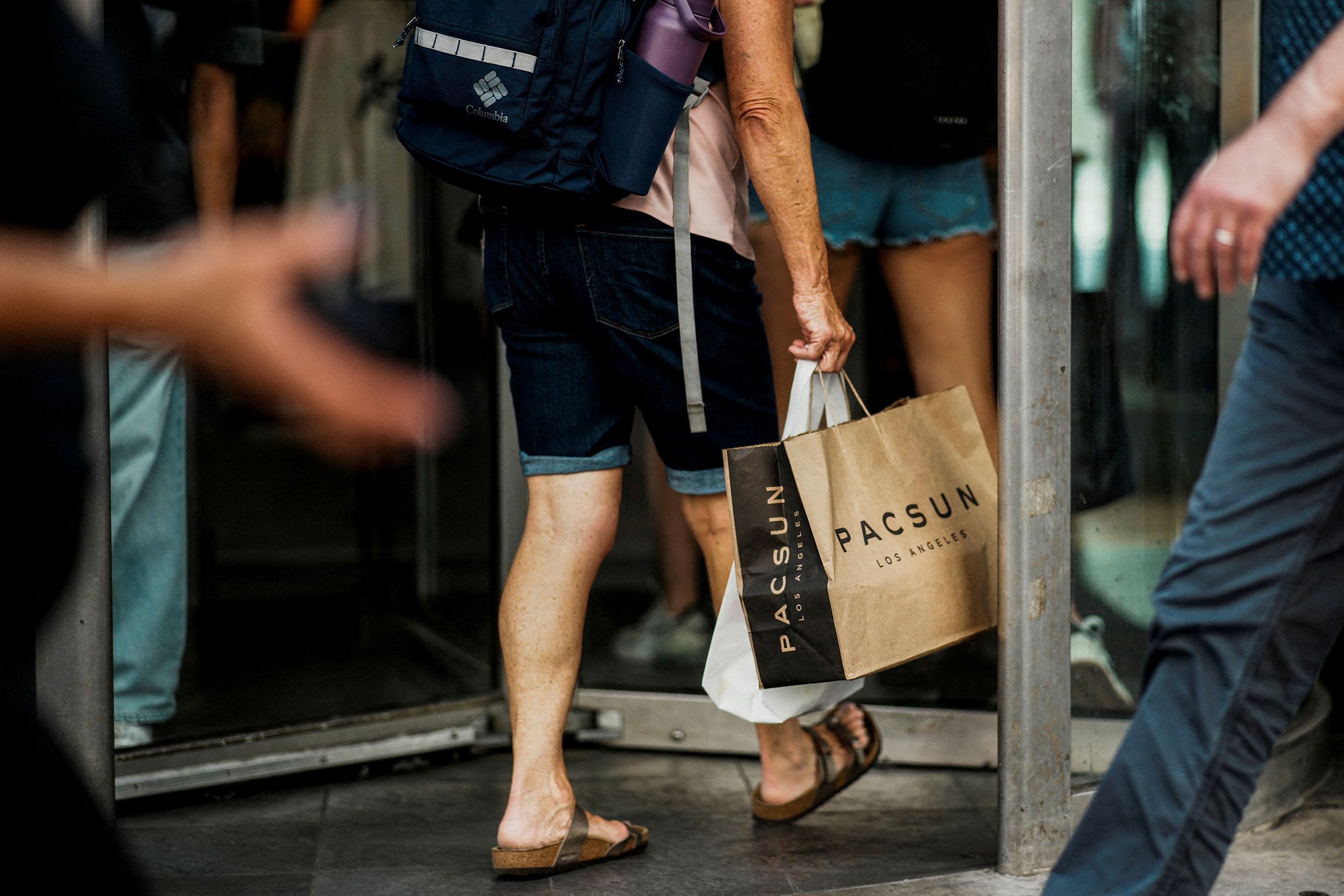Against the odds, Americans are still spending

By Bryan Mena, CNN
Washington (CNN) — Americans still opened their wallets last month, despite persistent fears about the economy, a slowing labor market and higher tariffs.
Spending at US retailers rose 0.6% in August, the Commerce Department said Tuesday, unchanged from July’s upwardly revised 0.6%. Last month’s figure came in much better than economists’ expectations of a 0.2% increase, according to a poll by data firm FactSet. Retail sales are adjusted for seasonal swings but not inflation.
Employers have hit the brakes on hiring in recent months as Americans once again grow pessimistic about the economy’s future. President Donald Trump’s widespread tariffs have also began to push up some prices, according to the Consumer Price Index.
Yet, US consumers haven’t cut back their spending meaningfully, and they may continue to spend, so long as layoffs don’t surge.
Retail spending was up across most categories last month, with online sales and purchases at clothing stores rising the most, increasing 2% and 1%, respectively.
The so-called control group of retail sales — a measure that strips out volatile components — rose 0.74% in August, up from July’s 0.5% and well above economists’ expectations of a 0.4% increase.
Sales last month were down at specialty stores and furniture retailers, falling 1.1% and 0.3%, respectively. Spending at health shops and department stores were both down 0.1% each.
“The economy seems to be doing just fine for now and perhaps the slow-down in payroll jobs is one gigantic head fake when it comes to forecasting the economy,” wrote Christopher Rupkey, chief economist at Fwd Bonds, in an analyst note Tuesday. “Consumer spending is resilient. Interest rate cuts do not need to be adjusted as the economy is sailing along just fine.”
Spending at restaurants and bars rose 0.7% in August from the prior month, according to the report.
Signs of weakness in the economy
Consumer spending remains resilient as other parts of the economy sputter.
Job growth during the summer was tepid, with revised data showing employers shed jobs in June, the first negative employment tally since December 2020. That brought an end to what was the second-longest period of employment expansion on record. Unemployment has also crept up and the number of unemployed people seeking work now outpaces job openings, according to Labor Department data.
Meanwhile, consumer sentiment is sliding back, after it briefly recovered from the near record lows of the spring when Trump launched his unpredictable global trade war.
The University of Michigan’s Index of Consumer Sentiment unexpectedly fell early this month to a reading of 55.4, with consumers continuing “to note multiple vulnerabilities in the economy,” according to a release. Joanne Hsu, the survey’s director, said in commentary that “trade policy remains highly salient to consumers, with about 60% of consumers providing unprompted comments about tariffs during interviews.”
Americans are also planning to cut back on spending in the future. Consumers expect that their monthly spending growth will likely be in the 3% range for the next year, according to the latest consumer survey from the Federal Reserve Bank of New York, released Monday, a step back from expectations for 3.3% monthly growth.
Federal Reserve officials on Tuesday begin their two-day policy meeting, which is widely expected to result in the first interest rate cut since December. A weakening labor market is a key reason why the Fed is expected to lower rates.
For now, America’s economic engine is still revving, largely thanks to the group that’s typically responsible for keeping spending afloat.
“The retail sales figures suggest aggregate spending is now back on track following a weak [first half of the year], but we think much of that strength has been concentrated among higher income households, who are responsible for most spending,” Michael Pearce, deputy chief US economist at Oxford Economics, said in written commentary Tuesday. “Spending among low-income consumers is still under pressure from a weakening labor market and a policy mix that is weighing on real disposable incomes.”
“We expect that dynamic to persist in 2026, even as overall spending holds up,” he added.
The-CNN-Wire
™ & © 2025 Cable News Network, Inc., a Warner Bros. Discovery Company. All rights reserved.
CNN’s Alicia Wallace contributed to this report.


